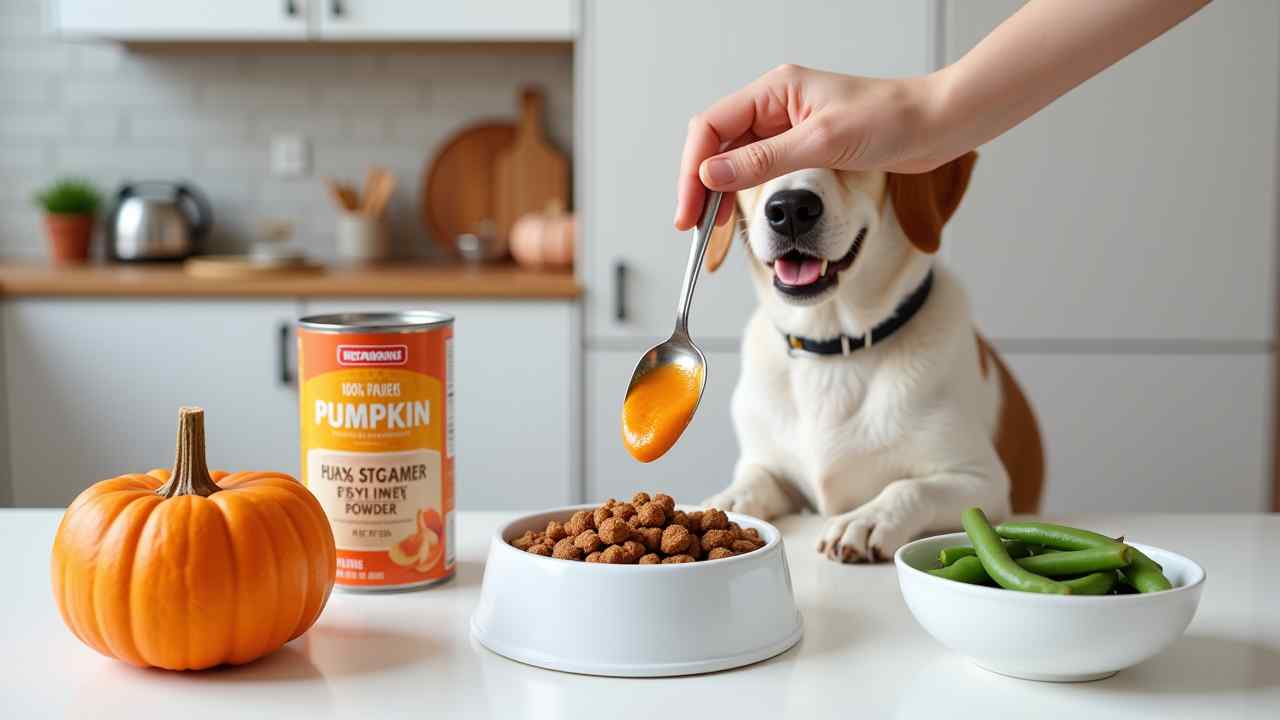
🐾 How to Add Fiber to a Dog's Diet (A Vet's Guide to Digestive Health)
🐾 How to Safely Add Fiber to Your Dog's Diet (A Vet's Guide) 🐾
❗ CRITICAL VETERINARY ADVICE: Before making any changes to your dog's diet, including adding fiber, you must consult with your veterinarian. Suddenly adding fiber can sometimes make digestive issues worse or mask a more serious underlying medical problem. This guide is for informational purposes only.
Fiber is an important nutrient that is often overlooked in a dog's diet. It plays a crucial role in maintaining a healthy digestive system. If your dog is struggling with issues like constipation or diarrhea, your vet might recommend increasing their fiber intake. But how do you add fiber to a dog's diet safely and effectively?
This guide will explain the benefits of fiber. We will also cover the best and safest sources to use for your furry friend. Let's get your dog's digestive health back on track! ✅
🤔 Why is Fiber Important for Dogs?
Fiber is a type of carbohydrate that is not easily digested. It passes through the digestive system, helping to regulate bowel movements and support gut health. There are two main types of fiber, and both are beneficial.
- Soluble Fiber: This type dissolves in water to form a gel. It can help to slow down digestion, which is useful for managing diarrhea.
- Insoluble Fiber: This type does not dissolve in water. It adds bulk to the stool, which is very effective for relieving constipation.
A diet with the right amount of fiber can help with anal gland issues, promote a feeling of fullness for weight management, and support a healthy gut microbiome.
🎃 What Are the Safest and Best Sources of Fiber for Dogs?
When you want to know how to add fiber to a dog's diet, the key is to choose simple, safe, and vet-approved sources. Here are the most common and effective options.
1. Why is Canned Pumpkin the #1 Choice?
Canned pumpkin is a superstar of the fiber world. It is a fantastic source of soluble fiber. This makes it a great tool for both diarrhea (it helps firm up the stool) and mild constipation. You must use 100% pure canned pumpkin, not sweetened pumpkin pie filling, which is toxic to dogs.
How to use it: Start with a very small amount. For a small dog, a teaspoon per meal is a good start. A large dog can have a tablespoon. Mix it directly into their regular food.
2. How can you use Psyllium Husk?
Psyllium husk (the main ingredient in Metamucil) is a great source of both soluble and insoluble fiber. It is very effective for adding bulk to the stool. You must use a plain, unflavored, and unsweetened version.
How to use it: Start with a very small amount, like 1/4 teaspoon for a small dog, mixed into their food. It is crucial to add extra water to their food when using psyllium to prevent it from causing a blockage.
3. Are Green Beans a good option?
Yes. Plain, canned or steamed green beans are a great, low-calorie source of natural fiber. They are a healthy way to add bulk to a meal. This is also a fantastic trick for weight management. Make sure they are served plain, with no salt or seasonings added.
4. What about a High-Fiber Dog Food?
For long-term management, the easiest solution is often to switch to a therapeutic high-fiber dog food. Brands like Hill's Prescription Diet have specific formulas (like w/d) designed for digestive health. Your veterinarian is the best person to recommend a specific food. You can find these at most vet clinics ("veteriner kliniği") here in Bursa. 🩺
⭐ The Golden Rule: Start Low and Go Slow
The most important rule when adding any fiber supplement is to start with a very small amount and increase it gradually over several days. Adding too much fiber too quickly can cause gas, bloating, and discomfort. Also, ensure your dog has constant access to plenty of fresh water, as fiber absorbs water in the gut. 🐾